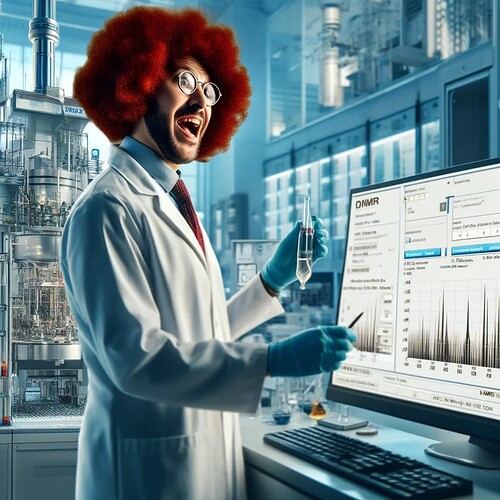qNMR has unique advantages in the quantitative analysis of raw material, especially for drug products and related compounds (e.g., intermediates and impurities). However, scientists and their managers sometimes challenge the switch from conventional approaches to qNMR because of concerns including the instrument price, operation cost, maintenance, and lack of available expertise in-house. For example, high magnetic field (a.k.a. low-temperature superconductors, usually no less than 300 MHz, 1H) NMR spectroscopy equipment is costly. Approximate cost for the standard 400-MHz instrument is $600,000. The 600-MHz instrument is $800,000, and the 900-MHz instrument is $5 million. The 1.2 GHz is the most expensive NMR model, for $17.8 million. The unaffordable cost may relate to the fact that NMR instruments are not yet widely used in analytical laboratories.
However, some straightforward calculations show that the cost of qNMR equipment may be partially offset by some unexpected savings. Several previous studies [1,2] included a thorough discussion of the cost of the NMR method. The NMR instrument lifecycle is somewhat longer than LC-based conventional analytical systems, which means the average cost per run for qNMR is just as affordable as other methods. For example, a standard 1H or 13C NMR only costs $45 per analysis. The cost of waste treatment is also significantly reduced with qNMR use compared with LC-based methods.
With the recent advent of lower-cost permanent magnet benchtop systems, [3] qNMR techniques now show great potential in the QC environment. As a cost-effective, low-field (non-cryogenic permanent magnet, 40-100 MHz, 1H) technique, NMR spectroscopy presents unique advantages. [4] In the past decade, because benchtop NMR spectroscopy has evolved rapidly, its applications continue increasing. For a benchtop model (e.g., 60 MHz), prices start from $25,000 for a refurbished model to $100,000 for a multinuclear one. The unique advantages of benchtop instruments are not only that they resolve the matter of cost, but also that they diminish the need for instrument maintenance and specialized expertise. In addition, the cost savings of qNMR methodology in mass fraction determination include time cost savings. Compared to months of mass balance collaborative study, the typical time to qNMR measurement result and the assigned mass fraction can be a matter of hours to days.
| [1] | Webster, G. K.; Marsden, I.; Pommerening, C. A.; Tyrakowski, C. M., Validation of pharmaceutical potency determinations by quantitative nuclear magnetic resonance spectrometry. Applied spectroscopy 2010, 64 (5), 537-42. |
|---|---|
| [2] | Liu, Y. Pharmacognostic Studies of Natural Deep Eutectic Solvents. University of Illinois at Chicago, 2018. |
| [3] | van Beek, T. A., Low-field benchtop NMR spectroscopy: status and prospects in natural product analysis†. Phytochemical Analysis 2021, 32 (1), 24-37. |
| [4] | Mitchell, J.; Gladden, L. F.; Chandrasekera, T. C.; Fordham, E. J., Low-field permanent magnets for industrial process and quality control. Progress in Nuclear Magnetic Resonance Spectroscopy 2014, 76, 1-60. |
Reference/Book Chapter: Quantitative NMR in Qulality Control
in Quality Control of Chinese Medicines-Strategies and Methods
